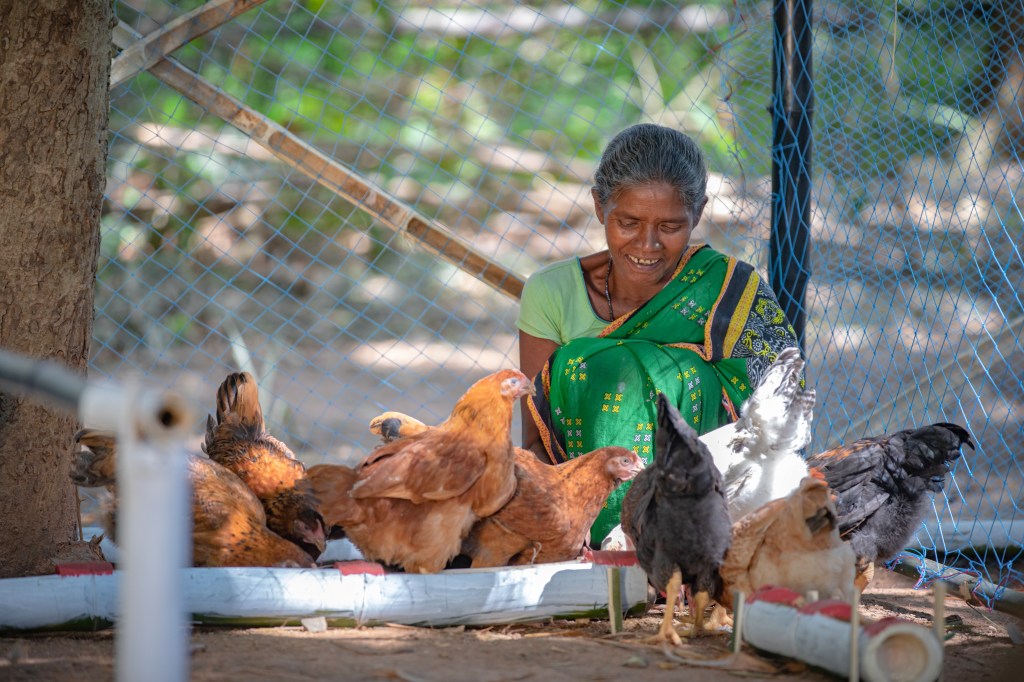Bird Flu Should Sharpen Focus on Poorest Farmers
By Surita Sandosham, President and CEO of Heifer International
The rumblings of another pandemic may have already begun. Investing in resources for smallholder farmers can help mitigate this threat.

The world is undergoing the fastest-spreading and largest-ever outbreak of H5N1, the pathogenic subtype of avian influenza or “bird flu” that epidemiologists have long warned could spiral into the next pandemic.
Today, more than 500 bird and mammal species globally have been infected. In the U.S., the virus has been found in more than 100 million chickens in 48 states, with experts discovering viral strains in commercial milk and documented cases of the virus hopping from livestock to humans. As wealthy countries begin purchasing vaccines and boosting surveillance measures, the threat this under-documented spread poses to global agrifood systems looms large.
Its reach already spans continents. The H5N1 virus has appeared in poultry in Vietnam, Taiwan, the Philippines and Laos, while the viral subtype H5N6 has been detected in Japan and South Korea. In January 2023, Ecuador reported its first case of avian flu in humans, and earlier this summer India, China and Cambodia recorded cases of children infected with the virus.
Taking this risk seriously now, before viral transmission snowballs, will require a concerted effort across sectors and governments to invest in those at the grassroots level in countries where access to large quantities of vaccinations is less attainable.
But what can policymakers and non-governmental organizations do to prevent a runaway train of virulent zoonotic disease? And how do we fortify food systems across the Global South, where levels of hunger, poverty and susceptibility to economic shocks are most acute—and the resources for dealing with these shocks least available?
One answer is a renewed focus on those whose lives and livelihoods are intimately connected with local food systems and dependent on healthy farm systems: smallholder producers. These farmers, who typically work on less than two hectares each but produce up to 80% of the food supply in Asia and sub-Saharan Africa, form the lynchpins of local nutrition, economic development, and climate resilience across much of the Global South.
But they also have the most to lose. Of the 600 million smallholders globally, many live in poverty, endure high rates of hunger, and would bear the devastating brunt of mitigation efforts. Losing a flock to inhibit pathogen spread would crush livelihoods and disrupt already tenuous food supplies in resource-poor communities.
That’s why efforts must be made now to invest in capacity strengthening efforts and locally appropriate prevention strategies for this critical population. Development funders should prioritize programs that provide smallholder farmers with the means and options to ensure the safety of their families, their livestock and their local environments.
Farmers should have ready access to the knowledge to identify and respond to early signs of disease. This includes training on biosecurity measures, proper vaccination protocols, and the safe handling of poultry. Investing in increased access to quality resources, like veterinary services and diagnostic tools, is essential to ensure these farmers can continue to feed themselves, their families and their communities amid growing concern around progress toward the development goals.
A renewed focus on this cohort cannot come at a more pressing time. The U.N.’s State of Food Security and Nutrition in the World report, released in July, found 733 million people faced hunger in 2023, stalling progress toward the goal to eradicate hunger by 2030. If current trends continue, it found, about 582 million people will be chronically undernourished at the end of the decade, half of them in Africa.
In lower- and middle-income countries, livestock health is intimately tied to human and environmental health, and the economic prosperity for tens of millions of rural households. Worldwide, over 1.3 billion people depend on livestock for their livelihoods. Pre-pandemic rumblings about this worrying development of zoonosis must be taken seriously.
Governments, international organizations and the private sector all have a role to play. A delayed or patchwork approach will not be enough to build the kind of robust monitoring and reporting system needed to keep the threat at bay. Taking zoonotic disease seriously will take innovation, research and resource mobilization from governments, philanthropists and the private sector. The best time to invest in smallholders was yesterday; the second-best time is now.
